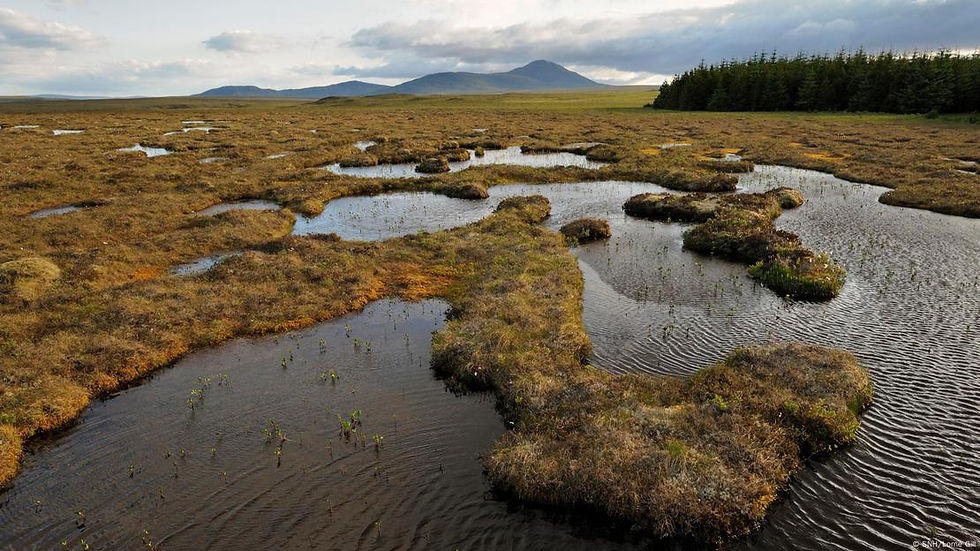
Peatland restoration
Peatland restoration seeks to recover these degraded ecosystems, mainly by rewetting the soil and reintroducing native vegetation such as Sphagnum mosses. Healthy peatlands store carbon, regulate water, and harbor biodiversity; when degraded, they release greenhouse gases. Their restoration is key to mitigating climate change, conserving species, and securing water resources, with support from international organizations such as the IUCN, Ramsar, and UNEP.
La restauración de turberas es el proceso de recuperar turberas degradadas para que vuelvan a funcionar como ecosistemas naturales. Esto implica, principalmente, rehumedecer el suelo (bloqueando canales de drenaje) y reintroducir vegetación nativa, como musgos del género Sphagnum. Las turberas sanas almacenan grandes cantidades de carbono, regulan el agua y albergan biodiversidad. Sin embargo, cuando se degradan, liberan gases de efecto invernadero, agravando el cambio climático.
Restaurarlas es clave para la mitigación climática, la conservación de la biodiversidad y la sostenibilidad hídrica. Organizaciones como la IUCN, Ramsar y el PNUMA apoyan estas acciones a nivel global, destacando su papel esencial frente a la crisis ambiental actual.
Water production and storage
Main theme:
European
Region:
800 - 1200
Precipitation (mm):
Medium
Application difficulty:
3, 6, 8, 11, 12, 13, 15 and 17
SDGs impacted:
Gravity
Energy used:
70 - 90
Efficiency (%):
Rural
Sector:
Reduction of greenhouse gas emissions, Biodiversity conservation, Improvement of water quality, Water regulation, Soil restoration and ecological functions, Long-term carbon sequestration, Reduction of fire risk
Expected environmental impact:
$800 - $1000 / ha
Estimated value:
1- https://www.theguardian.com/environment/article/2024/jul/26/scotland-flow-country-becomes-world-heritage-site-unesco?utm 2- https://www.iucn-uk-peatlandprogramme.org/peatland-restoration?utm 3- https://www.goldenagri.com.sg/es/peat-restoration-rebuilding-nature-one-step-at-a-time/?utm
Links of interest: